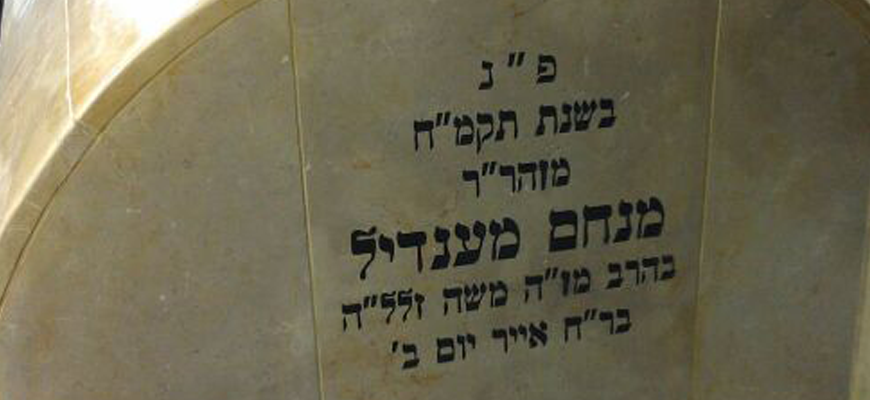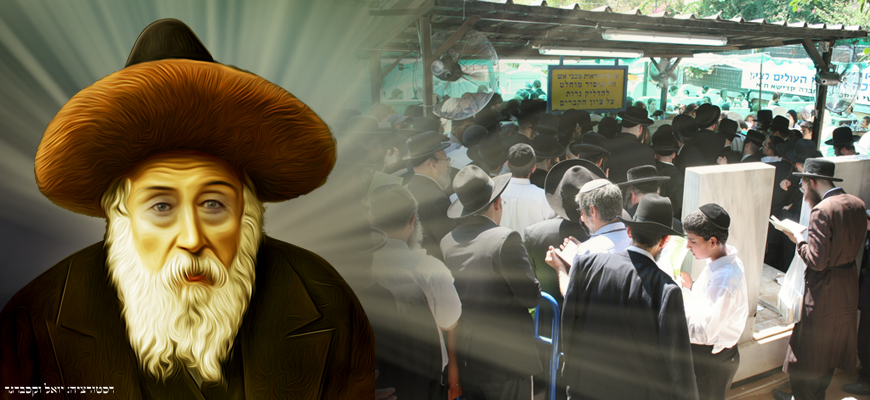Today, the 21st of Av, the yahrzeit of the Rebbe Rabbi Aharon Rokach of Belz Zt”l
The holy tzaddik Rabbi Aharon Rokach is the fourth rebbe in the lineage of Belz Hasidism and the founder of Belz Hasidism in Israel after the Holocaust.
Born in the month of Elul 1880 to his father Rabbi Issachar Dov Rokach of Belz, he was named “Aharon” after his grandfather Rabbi Aharon of Chernobyl and after his grandfather Rabbi Aharon of Karlin. His mother died at a young age, so he grew up with his grandfather, Rabbi Yehoshua Rokach.
The beginning of the Rebbe
When he was 14 years old, he got married, after his wedding, he devoted himself to the Torah, while he was withdrawn from the affairs of this world and rarely slept. He behaved humbly, and ran away from honor. After his father died on 1926 he was appointed as his replacement as rebbe and rabbinate of the town of Belz.
In his days, the followers multiplied to thousands and thousands and his influence reached far and wide. He was known as a genius in all parts of the Torah, both visible and hidden, and possessed of the Holy Spirit. For 13 years he served as rebbe in the town of Belz, until following World War II, after losing his entire family and himself being in danger, he had to flee.
The Rebbe’s rescue in World War II
The town of Belz was captured by the Germans about two weeks after the start of the war, but was handed over to the Russians because there was an agreement called the Ribbentrop-Molotov Pact according to which Belz belonged to the Russian region.
The followers of the Rebbe saw a danger to his life from the Russian government, and therefore, following this, Rabbi Aharon fled, together with his brother, the Rebbe of Bilgoriya, to the towns around Belz, which were under the control of the Germans. They stayed in the town of Sokal until Shavuot of the year 1940, and in the town of Permishlan until Shavuot of 1941.
The photo of Rabbi Aharon of Belz was published in the German newspaper “Der Stirmer” and the Nazis were looking for him. After the German invasion of eastern Poland, the Nazis burned down the synagogue in Permishlan, a fire in which the rabbi’s son and a large part of his family perished. The Rebbe’s associates managed to smuggle him and his brother to the Krakow area.
For about seven months, the Rebbe stayed under a false identity in the ghetto in the town of Wisnice, until the beginning of the mass deportations to the extermination camps from that area, when the Rebbe and his brother were transferred to Krakow itself, where they stayed in hiding for about five months.
Despite the concealment, the Rebbe’s house in Krakow became a place of pilgrimage for the Hasidim. With the liquidation of the Krakow ghetto, the Rebbe and his brother were transferred to the Buchnia ghetto. The Buchnia Ghetto was used as a labor camp, and was a hiding place for other Admoriim. There the Rebbe and his brother worked as tailors, and the Rebbe hid under the name Aharon Singer. In light of the growing danger to the Rebbe’s life, he and his brother were transported to Budapest in a complicated operation, by a former Hungarian officer for a large sum of money.
His ascension to Israel
On Tevet 1944, the Rebbe and his brother separated from the Hasidim and left for Israel via Romania, Bulgaria, Greece, Istanbul and Beirut.
The Rebbe’s arrival in Eretz Israel marked the beginning of the revival of Belz Hasidism after the terrible Holocaust. Rabbi Aharon laid the foundations for the regrowth of Hasidism, which became one of the largest and most important Hasidisms in Israel. The Rebbe settled on Ahad Ha’am Street in the center of Tel Aviv.
Since he lost his entire family in the Holocaust, he married a second time in the year 1949, to Rebbetzin Chana, the widow of the Rebbe of Bergsaz who was murdered in the Holocaust.








